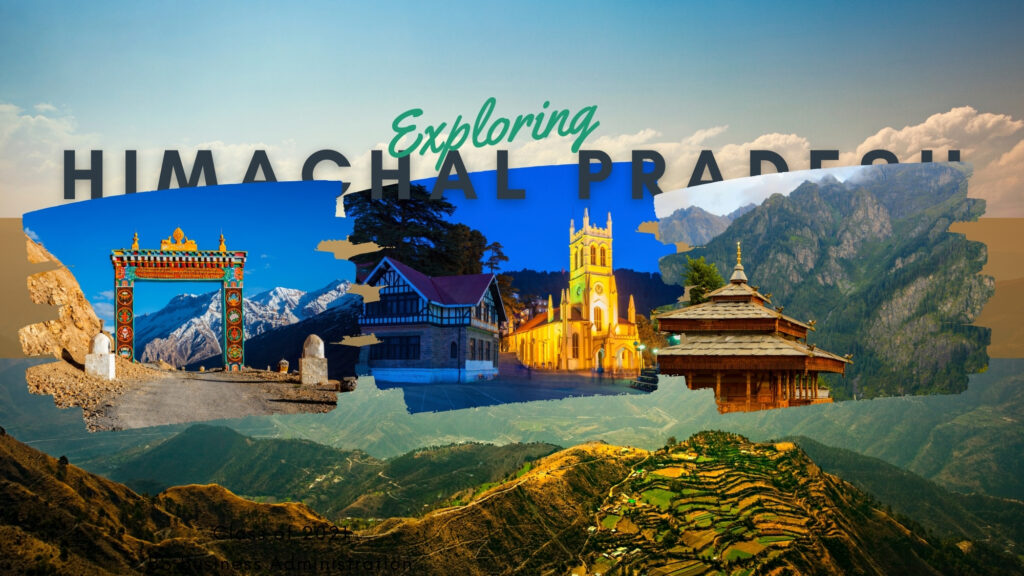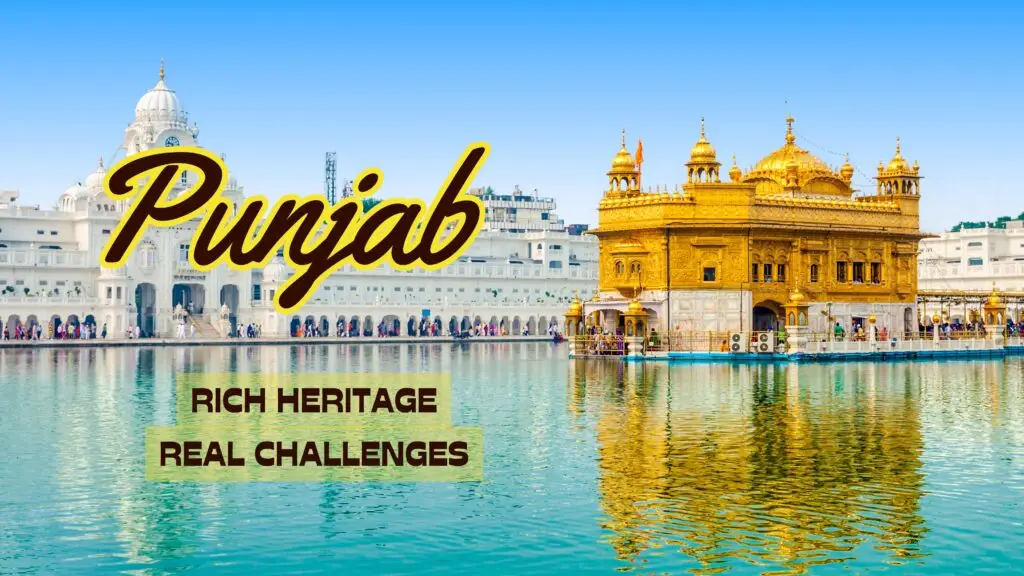Himachal Pradesh, also known as the “Land of the Dawn-Lit Mountains”, is a state that bewitches the heart with its stunning natural scenery and a rich cultural culture nestled in the lap of the mighty Western Himalayas. The snow-kiss crests of Zelikowan and Latahwal, the greener valleys of Kullu and Kangra, and the whole of this “Dev Bhoomi” or the “Land of the Gods” is a dream of nature-lovers, adventure seekers, and spiritual aspirants. Himachal is more than a picturesque place to visit, it is a saga of a strong people, a rich economy which is based on the richness of nature, and a strong desire to maintain its clean environment.
We will reach this Himalayan state at the core and explore all its ancient traditions and modern evolution, where there is always a story in every valley, river, and mountain.

From Princely States to Modern Statehood
Himachal Pradesh is a very interesting story of how many small states were unified into one modern state. Before 1948 the region was a cluster of 30 such states, each governed by its own ruler and an identity. During the British colonial era, these states were in a complicated relationship with the Raj, some of the rulers fought with the British in the 1857 revolt.
These states were incorporated to create the centrally governed state of Himachal Pradesh on April 15, 1948 after the independence of India. In 1966, the state was extended when hilly regions of Punjab were added to the state and finally, on January 25, 1971, Himachal Pradesh became a full-fledged state, the 18th in the Indian Union. This was a journey greatly led by its first Chief Minister, Dr. Yashwant Singh Parmar, who is widely considered as the founder of modern Himachal Pradesh due to his significant contribution towards the political and social life of the state.
Geography: Nature’s Masterpiece
Himachal Pradesh is as varied of people as of geography. It is virtually completely mountainous with altitudes as low as 350 meters in the sub-Himalayan foothills and high as 7,000 meters in the high-altitude ranges. The resulting dramatic variation forms different climatic regions, with tropical and subtropical climate to the south and cold alpine climate to the north.
- The Himalayas and Their Rivers: There are a number of major Himalayan ranges that cross through the state, such as the Dhauladhar, Pir Panjal and the Great Himalayas. Some of the most valuable rivers of India can be traced to these mountains, they are Beas, Sutlej, Ravi, Chenab and Yamuna. Not only do these rivers determine the topography by cutting deep gorges and fertile valleys, but they are also the lifeblood of the state economy as they are the main sources of hydroelectric energy of the state.
- Biodiversity Hot Spot: Himachal Pradesh is a world biodiversity hot spot. Its forest cover encompasses an amazing range of flora and fauna such as endangered species like the Western Tragopan (the state bird) and the elusive snow leopard (the state animal). More than 500 species of orchids and a broad variety of medicinal plants are also characteristic of the state. To conserve this natural heritage, the state has developed a number of national parks and wildlife sanctuaries, of which the Great Himalayan National Park is a UNESCO World Heritage site.
Economy: The Green and White Gold
Himachal Pradesh has evolved its economy not only to be a mainly agrarian economy but it has also started to grow in the model of a hill development with major growth sectors.
- Agriculture and Horticulture: Agriculture is the primary occupation of most of the people. But what has really changed the economy of the state is horticulture and more specifically the culture of apples. Himachal Pradesh is referred to as the “Apple State of India” and its apples are a big income earner. Other fruits such as peaches, plums, kiwis, vegetables and medicinal plants are grown in the state and are also a major contributor to the rural economy.
- Hydropower: Himachal Pradesh has a huge potential in the production of hydroelectric power due to its rapid flowing rivers. The state has used this resource and the sale of electricity has become one of its biggest sources of income. The Bhakra Dam and other power plants along the Sutlej and Beas rivers have turned Himachal into a power-surplus state.
- Tourism: Tourism is no doubt the economic powerhouse of Himachal Pradesh. The magnificent scenery of the state, its potential in adventure sports, and spiritual background attract millions of tourists every year. Each of the major tourist destinations is its own experience.
- Shimla: As the former summer capital of British India, Shimla is known by its colonial architecture, Mall Road, or the UNESCO world heritage, Kalka-Shimla “Toy Train”.
- Manali and Kullu: The two valleys are an adventure sports paradise, as they provide skiing, trekking, river rafting and paragliding. The area is also a favorite honeymoon spot and a point of entry to the high altitude deserts of Spiti and Lahaul.
- Dharamshala: There is so-called “Little Lhasa”, Dharamshala, where the Dalai Lama and Tibetan government-in-exile are located. It is a great place of worship and a cultural hub, a blend of Tibetan and Himachali cultures.
- Spiti Valley: A high, isolated desert area commonly referred to as “Little Tibet” because of its terrain and way of life, Spiti is the land of old monasteries, demanding treks, and awe-inspiring, barren beauty.
Vibrant Cultural: Festivals, Fairs and Traditions
Himachal Pradesh is a rich and multicolored mosaic of many tribes and their traditions. The state is characterized by its solid communal ties, vibrant clothing and elaborate respect to the local gods.
- Festivals: Himachal Festival is a wonderful event celebrating life, nature and people.
- Kullu Dussehra: Kullu Dussehra is a week long international festival unlike the other parts of India where Dussehra is a one day celebration. It entails a splendid procession of the local gods in palanquins and a great feast at the Dhalpur Maidan.
- Mandi Shivratri: Mandi is also referred to as “Choti Kashi” because of the many temples in the town and every year, there is a week-long Shivratri festival in the town, where thousands of local deities are taken to the town in elaborate processions to worship Lord Shiva.
- Minjar Fair: The Minjar Fair is a musical, dancing, and cultural festival in the Chamba Valley that is celebrated each week during the harvest season.
- Arts and Crafts: The arts and crafts of Himachali are a reflection of the creativity and skill of the people.
- Pahari Paintings: These miniature paintings were developed in the schools of Kangra and Basohli and are characterized by their fineness of detail and rich use of color.
- Handicrafts: Wood carving, metal work and finely designed shawls, particularly the most renowned Kullu and Kinnauri shawls are woven in unique geometrical designs and with bright hues.
- Music and Dance: Folk dances are a part and parcel of any celebration and are accompanied with the beat of traditional instruments. Nati dance is one of the popular dances in the state, performed during happy events.
Challenges and The Road Ahead
Himachal Pradesh, despite all its achievements, has a lot of problems and these issues are mainly associated with the unstable state of the ecosystem and mountains.
- Environmental Issues: Climate change is a significant threat to the state, and temperatures are increasing, rain patterns shifting, and glaciers are shrinking. The activities of unscientific constructions, deforestation and poor waste management, particularly in tourist attraction sites, have contributed to the rise in natural calamities such as flash floods and landslides. In recent years, there have been disastrous floods that have led to vast loss of life and property and this has brought into focus the importance of sustainable and responsible development.
- Infrastructure: Although road connectivity has seen an upturn due to the construction of projects such as the Atal Tunnel, the state continues to experience problems in developing sound and all-weather infrastructure that is able to withstand the extreme conditions that prevail in the mountains. This dependence on roads exposes the state to financial upheaval when there is a monsoon or any other natural disaster.
Government and civil society are actively seeking solutions to these problems by fostering ecotourism, sustainable farming and investment in climate resistant infrastructure. The realization that the health of the environment is inseparable with the prosperity of the state is on the increase.
The incomparable soul of Himachal
Himachal Pradesh is not a place, it is a lifetime. The quiet monasteries of Lahaul and Spiti, the colorful festivals of Kullu, the ancient temples and the hospitality of the people are hard to forget. It is a state that is an example of sustainable development and cultural conservation and proves that one can develop and remain close to the roots at the same time preserving the priceless natural heritage given to it. As you explore its valleys you will sense the heartbeat of a land where mountains are not merely a geographical phenomenon but a breathing being telling antique stories to whoever cares to listen.




